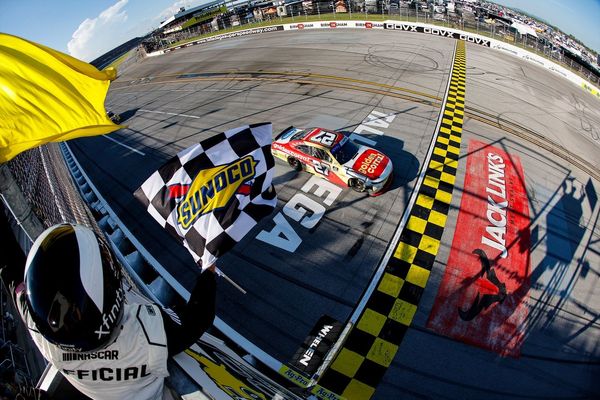Almost two years ago, a Chinese company named Royole beat Samsung and Huawei to the market with a foldable phone. I reviewed it, and given that it was the very first device of its kind in an ambitious new line of products, I graded it on a curve and said it was respectable, even though the device was undeniably bulky, hard to use and not suitable for the mass market.
Well, Royole is back with a sequel, the FlexPai 2, and it is much, much improved over the original. It’s still a bit bulky, but it’s easier to use. As for if it’s suitability for the mass market? It depends. I’ll explain this last point in a bit.
Design and hardware
[id=6]
The overall design philosophy of the FlexPai 2 is the same as the original: it’s a rectangular tablet that folds horizontally in half to become a smaller, square-like “smartphone.” I put quote marks around that because the wider and thicker form factor makes it unlike any other smartphone on the market.
The improvements over the first version are noticeable right away: the FlexPai 2 now folds completely flat, whereas the original’s folding point (a.k.a. the hinge) left a half-inch gap.
Speaking of the hinge, the first FlexPai’s hinge was covered in this weird kevlar fabric and closed shut with noticeable screws. It felt a bit…homemade. The hinge this time around is all metal and looks like a highly engineered piece of machinery.
[id=3]
At 12.9mm (almost exactly half an inch) thick when folded and weighing 339g (0.7lbs), the FlexPai 2 is still bulky, but more manageable than the original. I’ve been able to put it in my pocket and not have it look weird or weigh down one side of my pants.
When folded, the FlexPai’s 60Hz OLED screen wraps around the device, giving it a screen on its front and back. The front screen measures 5.5 inches, with a 16:10 aspect ratio. It’s a very wide form factor for modern smartphones and makes the device slightly hard to hold. The back screen is a 5.4-inch, 16:9 aspect ratio—the smaller form factor due to the existence of a camera module, too.
When opened up in tablet form, the FlexPai 2’s screen measures 7.8 inches, and it’s fine. It can’t compare to the Samsung Galaxy Fold 2’s 120Hz foldable OLED in resolution or refresh rate, and Royole’s panel feels more plastic compared to the harder surface of Samsung’s, but in a vacuum, the FlexPai 2’s screen is still pleasant to look at with respectable maximum brightness. If I’m not actively comparing it with the Fold 2’s screen, I have no complaints about the FlexPai 2’s screen: watching videos, playing games, and browsing Instagram look great.
[id=5]
The hinge feels sturdy, and can stay in a set angle like Samsung’s Fold 2—though it makes audible noises when unfolding and folding.
There’s only one camera system, housing four cameras, and it serves as both main camera and selfie camera—so yes, you have to flip the phone around to take selfies. The cameras are surprisingly okay considering that Royole is really new to the smartphone scene. The main 64MP camera pumps out detailed shots, although colors are slightly muted. The ultrawide-angle and telephoto lenses work as advertise, the latter able to produce 3x lossless zoom. The fourth camera is a 32MP portrait lens that helps produce depth of field for selfies. It works well, too, but I’m not sure how needed it is, as the 64MP main camera can probably do a good job for selfies, too.
Video performance suffers due to poor stabilization, and at night, all the cameras are slightly below par if compared to big names, but overall for a company making just its second ever smartphone, the camera experience is surprisingly solid.
[id=11]
Software and performance
The FlexPai 2 is equipped with a Snapdragon 865 with 8GB of RAM, so it’s got enough power, and the software is surprisingly polished, too. Running Android 10 with its own UI overlay on top named WaterOS, the UI transitions between phone and tablet form, switching between orientations with ease.
One important thing to note: because Royole is only selling the phone in China for now, it cannot run core Google apps. Unlike Huawei, which has been banned from putting the require Google frameworks in its phones, Royole’s issue is merely because Royole chose not to put the Google frameworks in there. This means the “problem” is one of choice, and if Royole ever tries to sell this outside, it can put Google’s core structure in the phone easily.
Still, this means readers interested in purchasing this device really need to consider if they can handle the fact that this phone cannot run the Google Play store, or Google Docs or Google Drive. Surprisingly, YouTube works fine, but you can’t sign in.
Most popular non-Google apps, from Instagram to WhatsApp to Facebook and Twitter, all run fine on the FlexPai 2, as they do not require Google’s framework.
Royole has built an intuitive split-screen multi-tasking system to take advantage of its large display. It works very similarly to Samsung’s Fold 2 in that you can run up to three apps at the once.
In my week of testing the phone, I did not encounter any major software hiccups: I streamed NetFlix and Spotify, surfed the web, read articles, sent dozens of emails without issues.
There’s a 4,500 mAh battery here and it can power the device a full day without issues. I never ran out of power once.
An admirable product that shows Royole’s technical prowess
The FlexPai 2 right now has two competitors: the Samsung Galaxy Fold 2 and the Huawei Mate XS. The Fold 2 is almost certainly a more polished and better product, with a sturdier screen, higher refresh rate, more capable cameras, and full support of Google services. However, it is also priced at $2,000, over $500 more than the 9,999 yuan ($1,493) price of the FlexPai 2.
The Huawei Mate Xs is even more expensive at over $2,200, and it has a more severe Google issue. So a case can be made that the FlexPai 2 is the better purchase.
[id=16]
I’m still not entirely sold on Royole’s (and Huawei’s) “folding outwards” design, because it leaves the screen exposed at all times. I think Samsung’s “close inwards like a book” design is more secure, as the bendy screen is protected when not in use.
Considering that the FlexPai 2 is just Royole’s second entry into the smartphone space, that it can be mentioned in the same breath as giants of the industry like Samsung and Huawei is admirable.
Royole, which had been making display panels for vendors and OEMS for the past five years, seems to be moving into consumer electronics, and the FlexPai 1 and 2 are just first of what the company hopes will be a diverse range of products. The company got off to a shaky start, but has righted its footing with the FlexPai 2.







